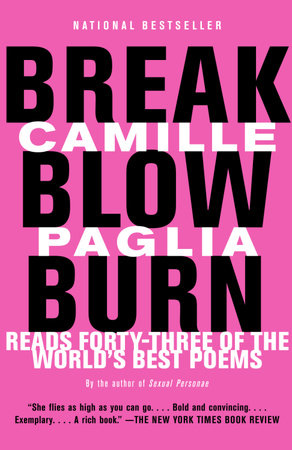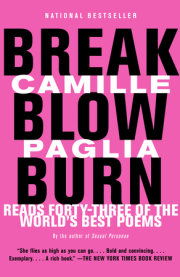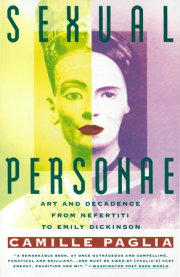one WILLIAM SHAKESPEARE Sonnet 73 That time of year thou mayst in me behold When yellow leaves, or none, or few, do hang Upon those boughs which shake against the cold, Bare ruined choirs, where late the sweet birds sang. In me thou see'st the twilight of such day 5 As after sunset fadeth in the west; Which by and by black night doth take away; Death's second self that seals up all in rest. In me thou see'st the glowing of such fire, That on the ashes of his youth doth lie, 10 As the deathbed whereon it must expire, Consumed with that which it was nourished by. This thou perceiv'st, which makes thy love more strong, To love that well which thou must leave ere long. The sonnet was a medieval form perfected by the Italian poet Petrarch, who was inspired by the courtly love tradition of southern France. From him, the fad of sonnet writing spread throughout Renaissance Europe. Sir Thomas Wyatt and the Earl of Surrey introduced the sonnet to England, though the style they favored was highly artificial and ridden with "conceits," showy metaphors that became clichés. Sir Philip Sidney and Edmund Spenser restored Petrarch's uid lyricism to the sonnet. But it was Shakespeare who rescued an exhausted romantic genre and made it a supple instrument of searching self-analysis. By treating the sonnet as a freestanding poem rather than a unit in a sonnet sequence, Shakespeare revolutionized poetry in the same way that Donatello, liberating the statue from its medieval architectural niche, revolutionized sculpture. No writer before Shakespeare had packed more into a sonnet or any other short poem. Sonnet 73 has a tremendous range of reference and a fineness of observed detail. Shakespeare's mobile eye prefigures the camera. Love, the sonnet's original raison d'être, recedes for a melancholy survey of the human condition. The poem is interested less in individual suffering than in the relationship of microcosm to macrocosm--mankind's interconnection with nature. Structurally, Sonnet 73 follows Surrey's format. In the Italian sonnet adapted by Wyatt, fourteen lines were divided into two quatrains (a quatrain is a set of four lines) and a sestet (six lines). The Elizabethan sonnet, afterward called the Shakespearean, used three quatrains and a couplet--two lines with the bite of an epigram. Shakespeare treats the three quatrains in Sonnet 73 like scenes from a play: each has its guiding metaphor, a variation on the main theme. These metaphors split off, in turn, into subordinate metaphors, to end each quatrain with a witty ourish. The insertion of "in me" to start each quatrain gives the poem immediacy and urgency and encourages us, whether justified or not, in identifying the speaker with the poet (1, 5, 9). The regular repetition of that phrase makes us hear and feel the poem's triple structure. "In me" operates like a stage cue, prompting the entrance of each metaphor from the wings. In the first quatrain, man's life is compared to a "year" in a northern climate of dramatically changing seasons. The aging poet pinpoints his location on life's spectrum as the transition from maturity to old age, when autumn shifts to winter. The opening metaphor of "time" yields to a bleak image of man's body as a tree: the bare "boughs" shaken by the "cold" wind are like the weak limbs of an elderly man, trembling with fear at approaching death (1–3). The branches tossed and outlined against the sky resemble the imploring arms of victims trying to escape fate. It's as if man is crucified on his own frail body. Scattered "yellow leaves" clinging to the branches evoke other afictions and losses of age, such as fading, thinning hair (an issue for Shakespeare, if our one portrait of him is accurate). The sporadic drift of leaves to earth (like sands through an hourglass) is re-created in the hesitant, tapping rhythm: "yellow leaves, or none, or few." Core energy is tapering off. As the quatrain ends, the ravaged, skeletal tree melts into a broken building (4). The "bare ruined choirs" belong to a medieval abbey, like those destroyed a half century earlier by Henry VIII when the Church of England seceded from Rome. The picturesque scene evokes a vanished civilization, now reclaimed by nature. So too, Shakespeare implies, do all human efforts end. The "sweet birds" who "late" (lately) sang from the trees but have now ed south recall the boy choirs who once filled the chapel with music. ("Choir" is also the area of a church where services are held.) The waning of song suggests that poetry came more easily to the young Shakespeare than it does now. The "bare ruined choirs" may also obliquely refer to the theaters where his career once ourished (and which were vulnerable to
re as well as closure by city authorities). The second quatrain compares man's life to a "day" (5). This metaphor is as ancient as Oedipus. (The Sphinx asked Oedipus, "What walks on four legs in the morning, two at noon, and three at night?" He replied, "Man.") Again Shakespeare visualizes precise degrees in a process of gradual change. Our "twilight" years are stages in sunset. The poem unveils a brilliant western tableau: the sun, symbolizing our physical vitality, has dropped below the horizon, but the sky is still ruddy with the afterglow (6). That too, like all earthly colors, will shortly ("by and by") dissolve into the "black" of night (7). The second quatrain concludes as the first one did, with an ornate apposition elaborating a prior line. Night is personified as "Death's second self"--his twin or alter ego--obliterating the sun and "seal[ing] up all in rest" (8). The implication is unsettling: sleep is a daily rehearsal for our final repose. At night, the world is a graveyard of sleepers, shrouded and entombed in their soft beds. The mental movement sketched by this quatrain is extraordinary: our eye ies out to the earth's inamed edge, then falls back and goes black, leaving us with only the helpless, tactile sensation of sleep. Six sibilants in line 8 produce a sound of "sh-h-h," hushing but also paralyzing. The third quatrain compares man's life to a "fire," an everyday utility endowed by Shakespeare with a dynamic biography (9–10). He projects himself into the fire's "glowing" phase, when the blaze is long gone and even the small, darting tongues have sputtered out. All that remains is hot coals, embers lying on a thick layer of "ashes," debris of the fire's flaming "youth." Shakespeare's metaphor makes our body temperature an index of ambition, physical stamina, and sexual passion. When it cools, we too will slowly "expire," that is, breathe our last (11). The acrid ashes are a "deathbed"--the second bed of the poem--because they are the funeral pyre of worldly desires. The fire metaphor ingeniously returns us to the start of the poem: these logs burned down to ash were cut from the "boughs" of the man-tree in the first quatrain (3). For Shakespeare, the human body is on fire from our day of birth. The thought is extended by a paradox: as living beings, we are simultaneously "nourished" and "consumed" (12). Creation and destruction are wed: the hotter the
re, the swifter it dies. The final couplet is a direct address to the reader as well as the poet's stern self-reminder: "This thou perceiv'st, which makes thy love more strong, / To love that well which thou must leave ere long." Whatever we seek or crave--a person, a profession, a high ideal--is evanescent. Nothing survives the ash pit of the grave. Though surrender and farewell are cruelly built into human life, there is value in the doing. Our sense of life's transience intensifies its pleasures. The sonnet's three submerged quatrains are like fleeting, elegiac self-portraits: the poet as a year, a day, and a fire. Shakespeare, like Darwin, sees humanity beset by impersonal forces. There is no reference here to God or an afterlife. Consciousness itself is elemental, an effect of light and heat that dissipates when our bodies are reabsorbed by nature. TWO WILLIAM SHAKESPEARE Sonnet 29 When, in disgrace with Fortune and men's eyes, I all alone beweep my outcast state, And trouble deaf heaven with my bootless cries, And look upon myself, and curse my fate, Wishing me like to one more rich in hope, 5 Featured like him, like him with friends possessed, Desiring this man's art and that man's scope, With what I most enjoy contented least; Yet in these thoughts myself almost despising, Haply I think on thee, and then my state, 10 Like to the lark at break of day arising From sullen earth, sings hymns at heaven's gate; For thy sweet love remembered such wealth brings That then I scorn to change my state with kings. Poetic design in Shakespeare's Sonnet 29 is a tour de force that makes Sonnet 73's symmetrical, self-contained units look almost stodgy. Ignore the modern punctuation: Sonnet 29 is essentially a single sentence, cascading down the lines with the virtuosity of the natural speaking voice that Shakespeare mastered in his career as an actor and playwright. He treats sonnet structure with audacious, jazzlike improvisation, as if it weren't even there. Syntax too is plastic in his hands. Most of the poem is just a prelude, a piling up of subordinate and participial clauses. The main body of the sentence (subject and verb: "I think") doesn't arrive until the tenth line, where it acts as a pivotal point of transformation. The sonnet re-creates an episode of severe depression that appears all too familiar to Shakespeare. (He was probably in his forties.) The litanylike cadence catches us up in an obsessive mental rhythm, so that we see things as he does. Direction is ingeniously indicated by theatrical "blocking": we are made to look one way and then another in a psychologically distorted world. At the same time, we feel burdened by heavy emotion, sinking to the nadir of the poem in the word "despising" (9). The overall effect is prophetically avant-garde: it's as if the poet, like an actor in tortured soliloquy, stands spotlit on a bare black stage. Two-thirds of the poem consists of a list of half-imaginary grievances. It begins with an allegorical tableau, as crisply limned as in a late-medieval panel painting. Shakespeare (if we may identify him with the speaker) claims he is "outcast," ostracized, "in disgrace with Fortune and men's eyes" (1–2). To be in disfavor with "men's eyes" means to have lost social status: the disparaging male eyes glare or, more woundingly, glance and turn indifferently away. But important female eyes don't see him at all: he has been abandoned by Fortune (some editions wrongly drop the capitalization), the ancient goddess Fortuna, who turned a rudder or wheel and who would later become Lady Luck, patroness of gamblers. Nothing breaks Shakespeare's way. Fortune is blind to him, and the Christian God is "deaf" or perhaps nonexistent. The poet's "cries," or prayers, like those of Hamlet's guilty but unrepentant king, are "bootless"--futile, useless--as they rise toward heaven and fade like echoes (3). Self-absorbed and cursing his fate, the poet is momentarily braced by angry energy (4). But seething dissatisfactions erupt, a catalog of lacks and wants. He seems to gesture this way and that toward a parade of envied others who do not see him, since he has become an invisible man. The man "more rich in hope" has reason for cheer since he is on the fast track toward a splendid future (5). The second is well "featured," that is, handsome, a boon that in any age draws attention and brings preferment (6). (We could infer that the poet thought his own looks unimpressive or mediocre.) The third has "friends" in high places, family connections or contacts critical for advancement in the premodern court world. There are hints of petty rivalries among the cultural elite: Shakespeare, incredible to us, envies another's "art," that is, literary skill, probably because it is of a more regular, polished, and fashionable kind (7). And he feels intimidated by yet another's "scope," or intellectual power, presumably owed to a university education. (The middle-class Shakespeare had a solid Stratford primary schooling, where he acquired, according to a contemporary satire, "little Latin and less Greek.") Art makes a disturbing reentry. That he is least "contented" with what he most enjoys suggests Shakespeare's writing career is in crisis (8). Uninspired, he is merely going through the motions. But his identity is so centered in art making that any threat to it worsens his sense of extremity. "Myself almost despising": he tastes the surfeited self-loathing that leads Hamlet to the brink of suicide (9). At the corrosive word "despising," when the poem seems about to self-destruct, rescue "haply" (luckily) comes as a happy thought--the memory of a precious face (10). Is it a man or a woman? The poet blurs it. But since the sonnet's human dramatis personae have all been male, we might well conjecture that the beloved is the "fair youth" whom Sonnet 144 calls an "angel," a role he plays here over the distance of time. His effect on the poem and on Shakespeare's "state" of mind is immediate: the mood darts upward like "the lark at break of day arising" (11). It's a new dawn. The plot line of the poem resembles a modern business graph that veers dizzyingly downward to bottom out in bankruptcy (9). At his lowest, the poet is sluggishly mired in "sullen earth," the gloom upon the hills just before sunrise, when the sky has already brightened (12). The lark bursts into song for the sheer joy of being alive. Its "hymns" follow the same arcing path as the poet's earlier "bootless" prayers, but a bird doesn't care if "heaven's gate" is locked. It makes music because it can. So does poetry ow from him, Shakespeare implies, when love is the goad. The beating of the lark's wings surely mimes the beating of his own heart, which quickens at the mere idea of the beloved. The poem concludes in unqualified direct address: "For thy sweet love remembered such wealth brings / That then I scorn to change my state with kings" (13–14). Perhaps the sonnet was sent as a gift to its inspirer, but the beloved has already half materialized as a luminous presence. The friend's "sweet love" may or may not have been physical, but it is enduringly restorative. Lady Luck's stinginess has been neutralized by a bonanza of spiritual "wealth." Love allows the revitalized poet to "scorn" ambition and materialism: high rank and power now seem paltry. Emotional exaltation brings salvation. Shakespeare's art is reborn, crystallizing in the poem before us.
Copyright © 2006 by Camille Paglia. All rights reserved. No part of this excerpt may be reproduced or reprinted without permission in writing from the publisher.










